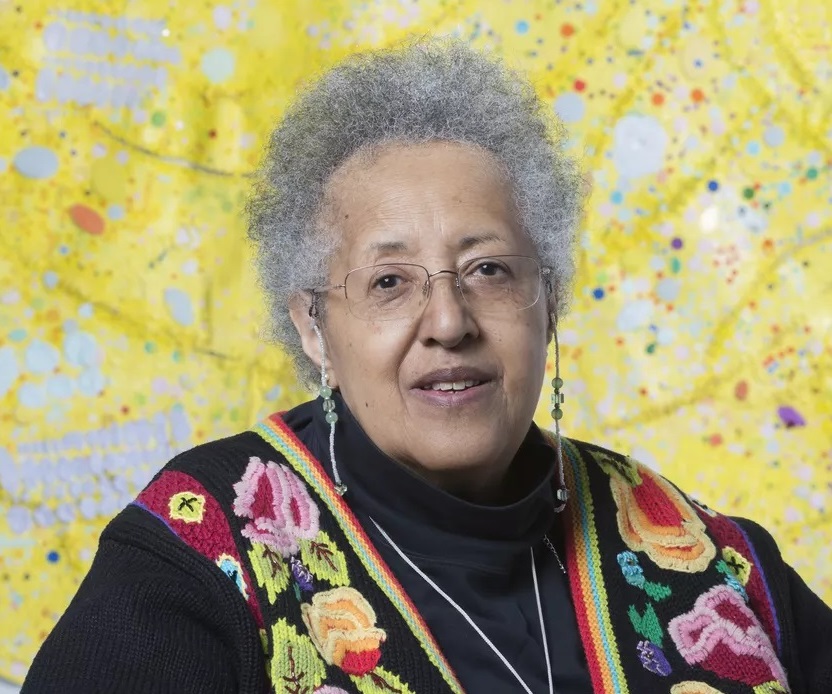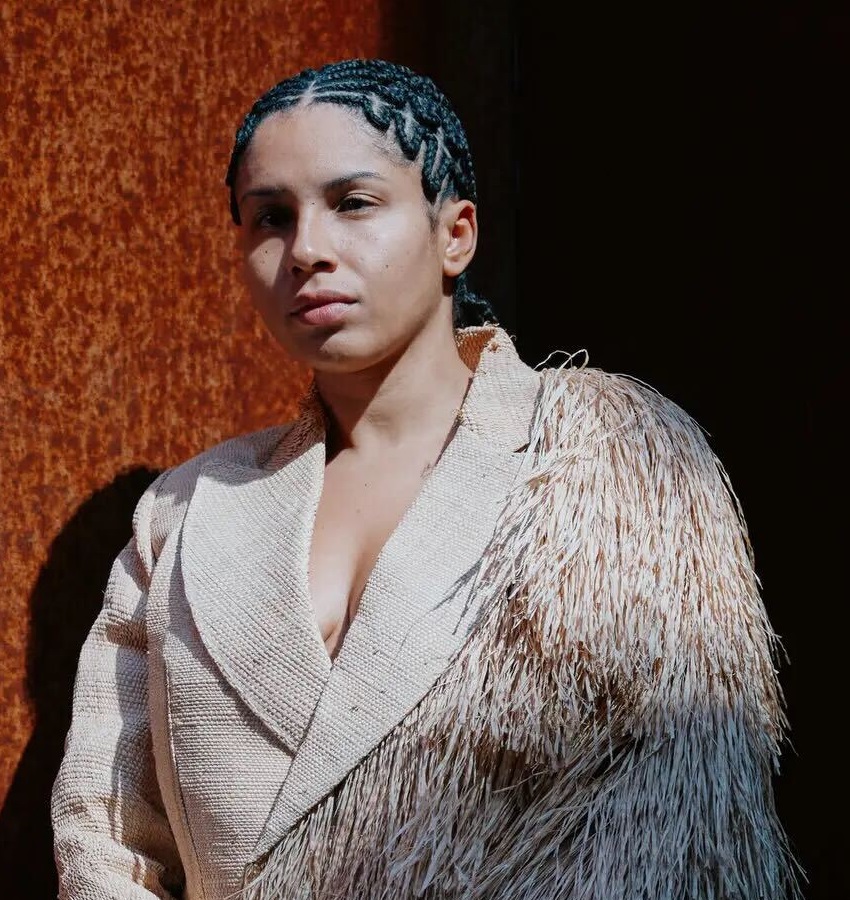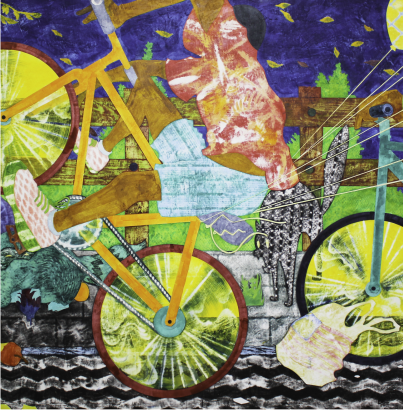Juneteenth "Let Freedom Ring" 2023

Juneteenth "Let Freedom Ring" 2023

Commemorating Freedom North and South
Meta Vaux Warrick Fuller, Emancipation, 1913 (Harriet Tubman Park in South End, Boston, Massachusetts)
Juneteenth commemorates the end of legal slavery in the U.S. It originated from the oldest known US celebration of the emancipation of enslaved African Americans in Texas, which was recognized as a Texas state holiday in 1980. Celebrated on June 19, Juneteenth became a national public holiday on June 17, 2021, Juneteenth National Independence Day
Slavery was not only in U. S. southern states, but existed in all 13 original U. S. colonies. In the North, for example, slavery was legal in Vermont until abolished in 1777, and in Massachusetts until 1783. On December 18,1865, the 13th Amendment to the U. S. Constitution abolished slavery nationwide.
Juneteenth brings Celebrations of Black joy, resiliency and hope to America's center stage. Miami MoCAAD invites you to explore selected celebrations of freedom from slavery, outside the U. S. South--in northern states and further south in the Caribbean, and Latin American countries. Also checkout artist spotlights, an emancipation inspired playlist and adult and children's bookshelves.
Aaron Douglas, From Slavery Through Reconstruction, 1934
[Aaron Douglas] (https://www.biography.com/artists/aaron-douglas)(1899-1979) was an influential painter and major figure during the Harlem Renaissance. Finding inspiration and love of art from his mother, Douglas made unique pieces that encompassed his love of modernism and African art. This fusion created beautiful pieces that explored themes of black culture and history. His notable mural series Aspects of Negro Life showcased the African American experience.
Maya Freelon, Shifting Seasons, 2019
[Maya Freelon] (https://www.mayafreelon.com/)(b.1982) is an award-winning artist. The late poet Maya Angelou described Freelon's work as "visualizing the truth about the vulnerability and power of the human being." Both delicate and resilient, Freelon’s use of tissue paper poses questions surrounding preservation, “high” and “low” art, “what is strength?” and “How do we find strength and power in fragility?”
Hugh Hayden, Pan-African, 2020
Hugh Hayden ( b. 1983) is an American artist who examines how selection, carving, and juxtaposition can transform how viewers see familiar objects and challenge our perceptions of themselves, others, and the environment. Creating metaphors for human existence and past experience, Hayden’s work questions the stagnant nature of social dynamics and asks viewers to examine their place within an ever-shifting ecosystem.
Renee Cox, Chillin’ with Liberty, 1998
Renee Cox] (https://www.reneecox.org/about)(b. 1960 ) is a Jamaican-American artist, photographer, lecturer, political activist, and curator. Specializing in digital portraiture and film, well known for artwork, where she is dressed in the colorful costume of a black superhero named Raje. **["**These slick, color-laden images, their large format, and Cox's own powerfully beautiful figure heighten the visual impact of the work, making Cox's politics clear and engaging."
Emancipation: The Unfinished Project of Liberation
[Emancipation](https://www.nytimes.com/2023/04/27/arts/design/amon-carter-museum-emancipation.html?unlockedarticlecode=5N-Pi7yQUDvZb8lciYcHxyc7wq1a8Pe-O5um5TotQF5-gV2DMGmxNKcayZayI2Hq-PRAovHKhpTkPMQT0ur5tlHHavVMUoABq1WgaO5Bl50qxNeEsRi5U6egW7GaQv9-N0QoDPvxd-ppQdeaYdctWuv4XVsWDdMl37C8cvO0TTrz6aVuA8KB01nIGJkdGctguu5v1cacwPEnmm1CVo3u1PfTM437N8ryr32L7-dhFFEHeN3o4AY45FjI3LwJeFMfjngKck4K45rYJvfW04nJy4W4bGWzqK8x0PNif8vpSyQZNzFFrVhjvW1-v9QEt5ekM0Fx0lovUcWX6T7v545RwLEUdGfysRldtssao&smid=url-share): The Unfinished Project of Liberation visualizes what freedom looks like for Black Americans today and the legacy of the Civil War in 2023 and beyond. Highlighting the perspectives of contemporary Black artists, [Emancipation] (https://www.cartermuseum.org/exhibitions/emancipation-unfinished-project-liberation)features works by Sadie Barnette, Alfred Conteh, Maya Freelon, Hugh Hayden, Letitia Huckaby, Jeffrey Meris, and Sable Elyse Smith. Amon Carter Museum. Ft. Worth, X. On view through July 9.
The Power of Descendant Communities to Shape Our Stories, Places, and Future (RECORDING)
Ascendant: The Power of Descendant Communities to Shape Our Stories, Places, and Future. was part of a two-day event honoring Monticello's Getting Word community] (https://gettingword.monticello.org/)and the rededication of the **[Burial Ground for Enslaved People**, highlighting the importance of descendant voices in the telling of American history—voices that have often been marginalized or left out entirely.
Alison Saar, Harriet Tubman Memorial, Swing Low, 2008
New Jersey was The Last Northern State to End Slavery. In 1865, New Jersey refused to ratify the Thirteenth Amendment, the U.S. Constitutional Amendment that abolished slavery across the country. Ultimately, New Jersey ended slavery on January 23, 1866 and celebrates Juneteenth as a State and Public Holiday.
Massachusetts celebrates Emancipation Day on July 8th, known as Quock Walker Day after the little-known formerly enslaved person who used clever legal maneuvers to secure his freedom. Enslaved Africans first arrived in Massachusetts in 1630s. Slavery was legally sanctioned in 1641. Massachusetts was a slave holding state in 1780 when the Massachusetts Constitution was enacted but abolished slavery in 1783.
New York abolished slavery on July 4, 1827. The state assembly passed legislation establishing Abolition Commemoration Day, which would be observed on the second Monday in July. Abolition Commemoration Day, not only marks the end of slavery in New York, but also honors the bravery and sacrifices of abolitionists.
Puerto Rico: On March 22, 1873, the Spanish National Assembly abolished slavery in Puerto Rico. Slavery had existed in Puerto Rico since the mid-16th century. The law freeing nearly 30,000 enslaved Africans required the “free” Afro-Puerto Ricans to continue working for their enslavers for at least three years to compensate enslavers for future labor loss. Emancipation Day, a public holiday that commemorates the abolition of slavery, is celebrated on March 22.
The US Virgin Islands celebrates Emancipation Day on July 3, honoring the day in 1848 when slavery was abolished.
Thomas J. Price, Lay it Down, 2017
Jamaican Emancipation
August 1, 1834, was the day of "freedom" across the British colonies. In Jamaica, August 1, 1834, was the day when children six under were freed from slavery while all over the age of six would work for food, clothes, and housing but not receive payment. This continued until [1838] (http://digjamaica.com/m/our-past/pieces-of-the-past/emancipation_story/)when Jamaica declared everyone of all ages free. This date would go on to be the date of celebration and was later overtaken by Jamaica’s Independence Day (the day Jamaica was no longer a British colony), August 6, 1962.
Emerson Rocha, mátria II - restituição, 2022
Brazilian Emancipation
Brazil’s journey to emancipation] (https://www.wilsoncenter.org/blog-post/slavery-brazil#:~:text=On%20May%2013%2C%201888%2C%20Brazilian,slavery%20in%20all%20its%20forms.)was similar to some other countries in Latin America--a process of **[gradual emancipation. On May 13, 1888, Brazil passed the abolition act to officially outlaw slavery. Though the work to completely end slavery is not yet finished, the Pretos Velhos Festival** celebrates Brazil's emancipation of slaves.
Oscar Murillo, MANIFESTATION," 2019
Colombian Emancipation
In 1821, Colombia began the process of gradual abolition of slavery. It took three decades, but by 1849 liberal groups were able to bring slavery to an end in 1851. The holiday, Afro-Colombian Day (Día de la Afrocolombianidad), was established in 2001 to celebrate the emancipation of Africans and and honor their contributions to Colombian society.
Listen to Miami MoCAAD's Emancipation inspired playlist
Miami MoCAAD combines art and technology to activate murals with QR codes, incorporating oral histories about Miami and the historic Overtown community. Check out excerpts from the oral history videos about struggles, triumphs and contributions. More interviews, Artist AR experience, and Virtual Mural experience can be accessed at onsite at the murals or the website. https://murals.miamimocaad.org/
Cecily Robinson-Duffie, Attorney at Law, discusses foundations of today's progress. To view the full video, visit oral histories at murals.miamimocaad.org.
Dr. Enid Pinkney discusses the work that had to be done to create privileges of today. To view the full video of Dr. Enid Pinkney, visit oral histories at murals.miamimocaad.org.
Jennifer Mack-Watkins: Children of the Sun
Children of the Sun is an exhibit catalog that showcases art using the innocence of children to highlight the hope and resilience they hold.
Stephanie M. H. Camp, Closer to Freedom: Enslaved Women and Everyday Resistance in the Plantation South
Closer to Freedom examines the everyday containment and movement of enslaved people. This investigation extends our recognition of slave resistance into new arenas and reveals an important and hidden culture of opposition.
Thulani Davis, The Emancipation Circuit Black Activism Forging a Culture of Freedom
The Emancipation Circuit traces how the four million newly freed from enslavement created political organizations and connections that mobilized communities across the South. This work reconfigures understandings of the evolution of southern Black political agendas while outlining origins of the enduring Black freedom struggle.
Barbara Krauthamer,Black Slaves, Indian Masters: Slavery, Emancipation, and Citizenship in the Native American South
This groundbreaking study rewrites the history of southern slavery, emancipation, race, and citizenship to reveal the centrality of Native American slaveholders and the Black people they enslaved.
W.E.B Du Bois ,The Brownies Book
[The Brownies’ Book: A Monthly Magazine for Children of the Sun] (https://www.loc.gov/item/22001351/)captures the series of tales written by W. E. B. Du Bois in the 1920s. He wrote Children of the Sun to uplift to provide Black children the ability to see themselves. This book gives readers insight into the lives of Black children a century ago.
Ellen Levine (Author), Kadir Nelson (Illustrator), Henry's Freedom Box: A True Story from the Underground Railroad
[Henry's Freedom Box:] (https://www.goodreads.com/en/book/show/315882)True Story from the Underground Railroad is a stirring, dramatic story of a enslaved person who mailed himself to freedom. He did not know his age. After the arduous journey in the crate, he finally had a birthday -- his first day of freedom.
Pat Sherman,Ben and the Emancipation Proclamation
[Ben, and the Emancipation Proclamation] (https://www.youtube.com/watch?v=WGZ05gVfGSQ)is based on the true story of Benjamin Holmes. Captivating text and memorable illustrations of Coretta Scott King pay tribute to the power of freedom and the written word.
Miami-Dade County Artist Access Grant - Ongoing Deadlines
Funded by Miami-Dade County and in partnership with FUNDarte, the Artist Access Grant Program is designed to assist practicing professional artists in any medium or discipline residing in Miami-Dade County to pursue opportunities that will advance their practice and careers in demonstrable ways.
The Miami MoCAAD Team
Miami MoCAAD Board Members:
Marilyn Holifield, Hans Ottinot, Monique Hayes, Sheldon Anderson,
Dr. Nelson L. Adams III
Volunteer-Museum Working Group Member
Michelle Johnson
Director of Interactive Media
Corbin Graves
Interns: Christian Allen, Jada Brown



















